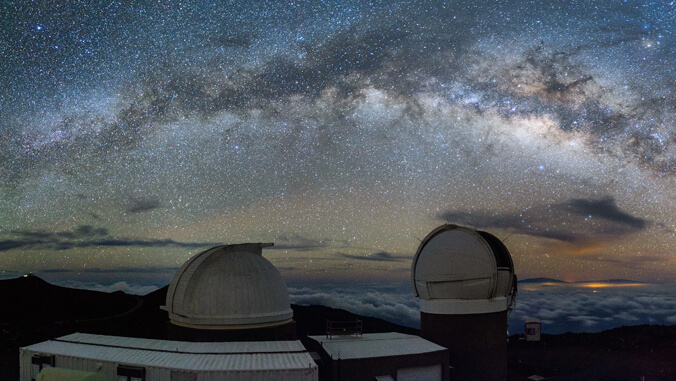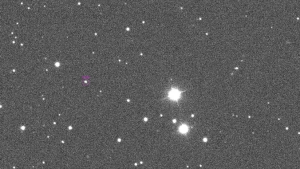
The University of Hawaiʻi Institute for Astronomy (IfA) received a $15 million NASA grant to continue its world-leading efforts to discover Near-Earth Objects (NEOs) and Potentially Hazardous Asteroids (PHAs). IfA’s Panoramic Survey Telescope and Rapid Response System (Pan-STARRS) atop Haleakalā currently finds nearly as many NEOs and PHAs as the rest of the world’s observatories combined, and nearly 60% of the largest and most dangerous ones with sizes greater than 140 meters across (459 feet).

“The Pan-STARRS team has had a huge impact on astronomy with a host of discoveries from the solar system to cosmology,” said Ken Chambers, IfA astronomer and principal investigator of Pan-STARRS. “These include the discovery of thousands of near-Earth objects, hundreds of Kuiper belt objects, dozens of comets, as well as ʻOumuamua—the first interstellar object. This NASA grant will enable us to continue our mission to protect the Earth from catastrophic asteroid impact as we scan the sky for anything that moves and everything that goes bang in the night.
Pan-STARRS data is available to the world and it has become the photometric standard for astronomical research. The grant will support operations and research for the next three years for Pan-STARRS’ wide area survey of potentially hazardous objects. The Pan-STARRS system consists of the Pan-STARRS1 (PS1) and Pan-STARRS2 (PS2) telescopes on Haleakalā; their enormous 1.4- and 1.5-gigapixel cameras, currently the two largest astronomical cameras in the world, and a massive computing cluster at UH Mānoa.
Hawaiʻi astronomy plays fundamental role in planetary defense
In July 2020, Pan-STARRS discovered a near-Earth asteroid, 2020 OO1, which is the length of about two school buses. Because of its projected close pass to Earth, NASA issued a notification which led to telescopes around the world, including those on Maunakea, to assist with rapid follow-up observations to verify the asteroid’s orbit and determine if it was possibly hazardous. At its closest approach on July 27, the asteroid, approximately 65 feet (20 meters) in diameter, passed close to Earth, at about 1.7 times the distance of the Moon. With both the PS1 and PS2 telescopes operational on Maui, the area of sky surveyed for NEOs each night has now doubled.
The Pan-STARRS archive of survey data is one of the most heavily used archives in astronomy.
This work is an example of UH Mānoa’s goal of Excellence in Research: Advancing the Research and Creative Work Enterprise (PDF), one of four goals identified in the 2015–25 Strategic Plan (PDF), updated in December 2020.

